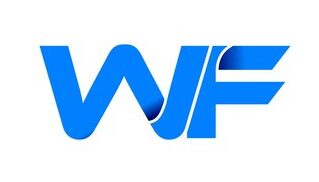Shannon Reardon Swanick’s career reflects a rare blend of strategic vision and purposeful leadership. Known for her ability to drive professional growth while prioritizing community impact, she has carved a path defined by resilience and innovation. From early career milestones to advocating for education and nonprofit causes, her journey challenges conventional ideas of success. This article explores how Swanick balances high-level leadership with grassroots advocacy, adapts her principles to modern challenges, and shapes a legacy rooted in authenticity. Discover the lessons behind her approach and what they mean for the future of leadership in an evolving world.
Climbing the Professional Ladder: Milestones and Challenges
Shannon Reardon Swanick’s rise through professional ranks began with deliberate steps grounded in strategic thinking. Early roles saw her identifying gaps in team dynamics and proposing solutions that improved efficiency, earning recognition from peers and supervisors. Her promotion to leadership positions came not from tenure alone but from consistently delivering results—whether streamlining operations, mentoring junior staff, or spearheading projects that aligned organizational goals with measurable outcomes.
A defining moment arrived when she led a cross-departmental initiative during a period of organizational restructuring. Faced with skepticism from seasoned colleagues, she focused on transparent communication and data-driven proposals to build consensus. The initiative’s success solidified her reputation as a leader capable of uniting teams under shared objectives.
Challenges emerged alongside achievements. Balancing high-stakes responsibilities with personal growth required adaptability. Early in her career, she encountered resistance to new methodologies she championed. Rather than retreating, she leveraged small-scale pilot programs to demonstrate their value, gradually winning over critics. Later, managing remote teams during shifting workplace norms tested her ability to maintain cohesion without in-person interaction. Her response—prioritizing regular check-ins and fostering virtual collaboration—became a model for peers.
Recognition followed, including awards for innovation and leadership. Yet Swanick often emphasizes that growth stems from setbacks as much as triumphs. A missed promotion early on prompted her to refine her approach to stakeholder engagement, while budget constraints in a key project taught resourcefulness. These experiences shaped her belief that obstacles, when met with reflection and resilience, become catalysts for refined strategies.
Her career trajectory underscores a pattern: setting clear goals, embracing iterative learning, and maintaining focus on long-term impact over short-term wins. This approach not only advanced her professionally but also prepared her to tackle broader challenges in advocacy and community leadership.
Leadership Beyond the Boardroom: Community and Advocacy
Shannon Reardon Swanick’s influence stretches into spaces where professional expertise meets societal need. Her dedication to community engagement is evident in hands-on volunteer roles, where she has organized local programs targeting literacy and workforce readiness. One initiative, a mentorship project pairing professionals with youth in underserved areas, began as a grassroots effort and grew into a multi-city operation, directly impacting hundreds of participants.
Her nonprofit involvement often centers on education. Swanick collaborated with schools and policymakers to redesign curricula, integrating practical skills like financial literacy and career planning. A pilot program she supported now operates in over 20 schools, blending classroom learning with real-world applications. This work stems from her belief that education should empower students beyond academic metrics, preparing them for tangible challenges.
Addressing community needs, Swanick adopts a collaborative framework. When faced with rising food insecurity in her region, she coordinated a network linking local businesses, farms, and volunteers to redirect surplus food to families. The initiative not only reduced waste but also provided consistent meals for thousands annually. Her method—identifying shared goals among disparate groups—reflects her corporate leadership style: pragmatic, inclusive, and anchored in measurable outcomes.
This blend of advocacy and action underscores her view that leadership transcends titles. By merging strategic thinking with empathy, Swanick demonstrates how professionals can drive change while excelling in their careers. Her efforts challenge the notion that community work exists separate from professional success, proving both can reinforce a legacy of meaningful impact.
Redefining Success in the Digital Era
Shannon Reardon Swanick’s approach to leadership defies rigid definitions, particularly as technology reshapes how professionals connect and achieve. While traditional metrics of success often prioritize titles or revenue, she emphasizes values like adaptability and human-centered impact. Her work during shifts toward remote collaboration illustrates this: rather than viewing digital tools as replacements for in-person interaction, she redesigned workflows to prioritize clarity and trust. Weekly virtual town halls and transparent goal-setting became staples, fostering accountability without sacrificing team morale.
Her definition of success also challenges the pressure to equate busyness with productivity. Swanick openly advocates for boundaries, such as designated “unplugged” hours, to protect personal time while maintaining professional rigor. This balance reflects her belief that sustainable achievement requires honoring both ambition and well-being.
In advocating for education and community programs, she integrates digital platforms thoughtfully. For instance, her mentorship initiatives now include virtual workshops, expanding access to rural participants who previously faced geographic barriers. Yet she remains cautious about over-reliance on technology, insisting that screen-based solutions complement—not replace—face-to-face relationship-building.
Swanick’s philosophy resonates in a world where burnout and disconnection are common. By framing success as a blend of purpose, adaptability, and holistic growth, she offers an alternative to hollow benchmarks. Her ability to merge traditional leadership strengths—like strategic planning—with modern demands for empathy and flexibility positions her as a model for professionals navigating an era of constant change. This reimagined vision doesn’t discard past principles but evolves them to meet today’s challenges, proving that meaningful success is both timeless and adaptable.
Philosophy and Principles: Guiding Career and Life
Shannon Reardon Swanick’s career is anchored in a set of core beliefs that merge professional rigor with human-centric values. Central to her philosophy is the idea that growth stems from continuous learning—not just through formal education, but by actively seeking diverse perspectives. Early in her career, she adopted a practice of quarterly self-evaluations, reflecting on decisions and interactions to identify areas for improvement. This habit, paired with a willingness to pivot when necessary, allowed her to evolve without losing sight of her foundational goals.
Empathy plays a defining role in her leadership style. Swanick often cites a project early in her management career where team morale dipped due to unrealistic deadlines. Instead of pushing harder, she reworked timelines collaboratively, acknowledging stressors while maintaining accountability. The result was a motivated team that exceeded targets, reinforcing her view that understanding individual needs drives collective success.
For aspiring professionals, Swanick emphasizes authenticity over imitation. She discourages rigid adherence to conventional career paths, urging others to define success on their own terms. During workshops, she shares examples of professionals who thrived by aligning roles with personal strengths—like a colleague who shifted from corporate finance to nonprofit consulting, doubling community impact. Her advice centers on three pillars: build genuine relationships, remain open to unconventional opportunities, and measure progress by the value created, not just titles earned.
Looking ahead, Swanick aims to scale initiatives bridging education and workforce readiness. She plans to partner with tech companies to develop apprenticeship programs for students in underserved regions, blending classroom theory with hands-on experience. Another priority is advocating for policies that incentivize businesses to invest in local education systems, creating sustainable pathways for youth.
Her personal aspirations mirror her professional ethos. Swanick intends to deepen her volunteer involvement, particularly in mental health advocacy, an area she connects to workplace well-being. By aligning her future goals with the principles that shaped her past—adaptability, empathy, and purpose—she continues to model how values-driven leadership can reshape industries and lives.
Legacy and Future Horizons
Shannon Reardon Swanick’s contributions extend beyond individual achievements, leaving a mark on industries and communities alike. Her mentorship programs, educational reforms, and advocacy campaigns have created frameworks others replicate, emphasizing scalability and sustainability. For instance, the food redistribution network she helped establish continues to operate independently, supported by local partnerships she nurtured—a testament to her focus on systems that outlast personal involvement.
In professional spheres, Swanick’s methods for remote team management and stakeholder collaboration are now taught in leadership workshops, reflecting her influence on modern workplace practices. Colleagues describe her legacy as one of empowerment: equipping others with tools to lead with both competence and compassion.
Looking forward, Swanick remains committed to addressing emerging challenges. She anticipates shifts in workforce dynamics, particularly the integration of artificial intelligence, and advocates for proactive ethics training to guide its use. Her upcoming projects include piloting hybrid education models that combine digital tools with community-based mentorship, aiming to bridge urban-rural opportunity gaps.
She also envisions leadership evolving toward greater inclusivity, where diverse voices shape organizational and societal priorities. Plans to mentor underrepresented professionals in executive roles align with this goal, ensuring varied perspectives influence future decision-making.
Swanick’s story is not one of static accomplishment but continuous evolution. By pairing her foundational values with an openness to change, she demonstrates how legacies are built not just on what is achieved, but on how those achievements inspire others to redefine what’s possible. Her work invites professionals to view leadership as a dynamic force—one that adapts, uplifts, and endures.
Conclusion
Shannon Reardon Swanick’s career embodies a powerful fusion of ambition and humanity. By blending strategic leadership with community-driven action, she redefines what it means to lead effectively in a complex world. Her journey—marked by professional milestones, advocacy for education, and innovative approaches to modern challenges—shows that success thrives when rooted in authenticity and service. Swanick’s example invites professionals to rethink traditional paths, prioritize meaningful impact, and embrace adaptability as a strength. As workplaces and societies evolve, her story serves as a reminder that the most enduring legacies are those built not on individual accolades, but on empowering others to rise.

